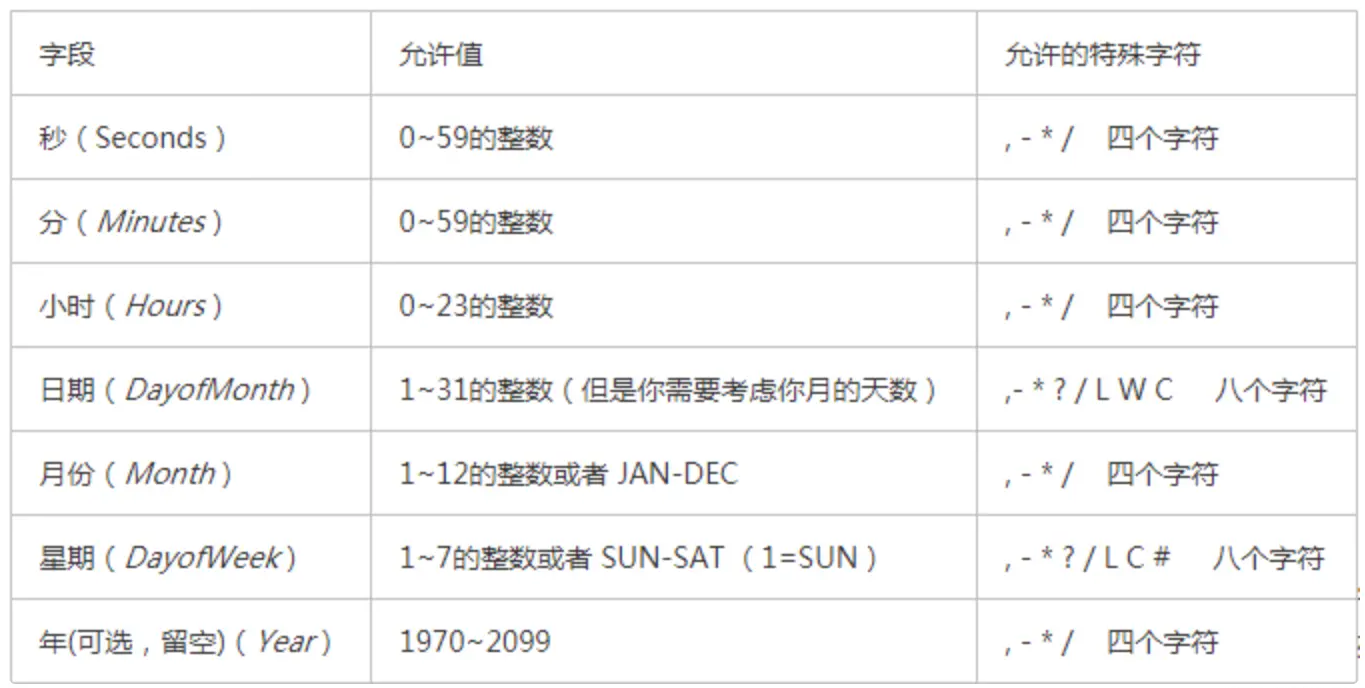原帖
启动
npm install --save @nestjs/schedule
1
2
3
4
5
6
7
8
9
10
11
12
13
14
15
16
17
18
|
import { ScheduleModule } from "@nestjs/schedule";
@Module({
imports: [ScheduleModule.forRoot()],
controllers: [AppController],
providers: [AppService, TaskService],
})
export class AppModule {}
import { Cron, CronExpression } from "@nestjs/schedule";
@Injectable()
export class TaskService {
@Cron(CronExpression.EVERY_5_SECONDS)
handleCron() {
console.log("[task execute]");
}
}
|
还有 <font style="color:rgb(37, 41, 51);">@Interval</font> 指定任务的执行间隔;<font style="color:rgb(37, 41, 51);">@Timeout</font> 指定多长时间后执行一次
| @Interval(3000)
handleCron() {
console.log('[task execute]', this.aaaService.findAll());
}
@Timeout('task3', 3000)
task3() {
console.log('task3');
}
|
使用 <font style="color:rgb(37, 41, 51);">SchedulerRegistery</font> 来对定时任务做增删改查。
新增 cron 任务得先安装 <font style="color:rgb(37, 41, 51);">npm install --save cron</font>
1
2
3
4
5
6
7
8
9
10
11
12
13
14
15
16
17
18
19
20
21
22
23
24
25
26
27
28
29
30
31
32
33
34
35
36
37
38
39
40
41
42
43
44
45
46
47
48
49
| export class AppModule implements OnApplicationBootstrap {
@Inject(SchedulerRegistry)
private schedulerRegistry: SchedulerRegistry;
onApplicationBootstrap() {
const crons = this.schedulerRegistry.getCronJobs();
crons.forEach((item, key) => {
item.stop();
this.schedulerRegistry.deleteCronJob(key);
});
const intervals = this.schedulerRegistry.getIntervals();
intervals.forEach((item) => {
const interval = this.schedulerRegistry.getInterval(item);
clearInterval(interval);
this.schedulerRegistry.deleteInterval(item);
});
const timeouts = this.schedulerRegistry.getTimeouts();
timeouts.forEach((item) => {
const timeout = this.schedulerRegistry.getTimeout(item);
clearTimeout(timeout);
this.schedulerRegistry.deleteTimeout(item);
});
console.log(this.schedulerRegistry.getCronJobs());
console.log(this.schedulerRegistry.getIntervals());
console.log(this.schedulerRegistry.getTimeouts());
const job = new CronJob(`0/5 * * * * *`, () => {
console.log("cron job");
});
this.schedulerRegistry.addCronJob("job1", job);
job.start();
const interval = setInterval(() => {
console.log("interval job");
}, 3000);
this.schedulerRegistry.addInterval("job2", interval);
const timeout = setTimeout(() => {
console.log("timeout job");
}, 5000);
this.schedulerRegistry.addTimeout("job3", timeout);
}
}
|
cron 定义
nest 使用得定时系统是基于 Unix-like 操作系统中用于定时执行任务的工具 **cron**, 完全可以叫 chatgpt 帮助你来定义, (跟 jenkins 的还是有区别的,jenkins 还支持 H 符号来分散负载)

其中年是可选的,所以一般都是 6 个。格式:秒 分 小时 日期 月份 星期 <年> ,每个字段都可以写* ,比如秒写 *就代表每秒都会触发,日期写 * 就代表每天都会触发。
但当你指定了<font style="color:rgb(37, 41, 51);">具体的日期</font>的时候,由于不知道是星期几,如果写*表示那天都会执行,自然会冲突,所以当指定了具体的日期的时候,<font style="color:rgb(37, 41, 51);">星期得写?</font>,相反星期确定时,日期就应该写 ? 啦
1
2
3
4
5
6
7
8
9
10
11
12
13
14
15
16
17
18
19
20
21
22
23
|
7 12 13 10 * ?
0 20-30 * * * *
0 5,10 * * * *
0 5/10 * * * *
* * * ? * L
* * * L * ?
* * * W * ?
* * * 2W * ?
* * * LW * ?
* * * ? * 4
* * * ? * 1
|
更多
